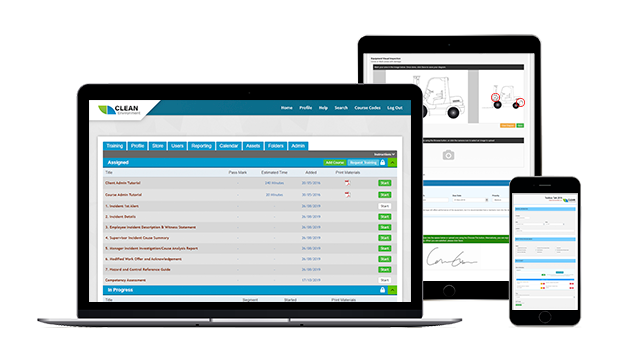
The Best LMS: A Lifesaving System?
By using an LMS or Learning Management System, a company can manage all steps of the process when training employees. The applications of the best LMS include new hire orientations, ongoing training for current employees, and keeping up with local regulations. LMS software goes beyond training as it also protects the lives of employees by giving them safety skills.
An LMS is characterized by the flexibility to cover many topics, and this includes occupational health and safety. An LMS can keep an updated profile of each employee, with key information like courses completed and their corresponding test results. The system is able to manage pending training for each employee, providing a snapshot of the skills that are still being acquired. This way, managers can avoid exposing workers to hazards for which they are not prepared. For example, employees who are still learning how to operate heavy equipment should not be assigned to trucks, unless all training requirements are completed. Otherwise, the company creates unnecessary risk, and there may be legal consequences even when no accidents happen.
An LMS comes with an implementation cost, like many other safety investments. However, companies face much higher costs with lives and money without proper training in place. Several industry studies have covered this topic, revealing that the avoided costs of accidents can be three times higher than safety costs.
The best LMS software helps protect employees, by keeping track of safety skills and making sure they are developed. Here are 4 ways in which an LMS can improve workplace safety in your company.
1) Improve Training
The best LMS software includes a user-friendly platform to deliver content, which helps develop skills and acquire knowledge. An LMS can replace classroom training with online courses, which have several advantages:
- Instead of interrupting their work for a classroom course, employees can choose a schedule to concentrate better – this improves learning.
- Since progress is monitored individually, a customized training program can be created for each employee. With classroom training in groups, this approach is not viable.
An LMS can also be used to apply exams with remote proctoring or other controlled conditions, ensuring that the results are valid. The LMS can also identify areas of opportunity for each employee, such as the need to improve an important safety skill. In these cases, reinforcement training can be scheduled right away.
2) Reduce Accidents

If you were to conduct a survey about the best ways to prevent accidents, many safety managers would likely mention worker involvement. With effective safety training, each employee becomes a potential inspector who can spot hazards at work. However, this is only possible when three conditions are met:
- Employees must be aware of safety and its importance. To keep their workplaces safe, companies must create the right culture. Safety should become the normal way of doing business, and not an extra requirement.
- Employees must be capable of identifying hazards. Even when safety is a top priority, you can only avoid hazards if you know they exist. Safety awareness is critical, but employees should also be trained on what they may encounter at work.
- Employees must have the skills to protect themselves. Other than being aware of workplace hazards, employees must be well trained on how to avoid them. This includes the correct use of personal protective equipment (PPE).
When an LMS is used for safety training, it can cover all three areas: general awareness, job-specific hazards, and using protection measures correctly.
3) Improve Health and Safety Administrative Processes
Onboarding is necessary even when a company hires top talent, especially in high-risk sectors like mining and energy. New employees must get familiarized with both industry regulations and internal safety policies. Depending on the job, local regulations may impose mandatory training requirements. To meet both regulations and internal safety programs, new hires may be subject to a long list of training requirements. This process is difficult to manage without software, especially in companies with plenty of personnel. An LMS optimizes the training process while making compliance easier. Safety training during the onboarding process is critical in heavy industries like construction. Accidents are less likely when new employees are fully aware of workplace hazards, and how to protect themselves.
4) Save Money
Workplace accidents often lead to severe injuries and fatalities, which are consequences that cannot be described in terms of money. However, accident prevention also offers measurable savings: several studies have revealed that every dollar invested in safety can be recovered three times in the form of avoided costs. Workplace safety is a part of being socially responsible, but it also makes sense financially. If a company wants to reduce accident rates, one of the most effective solutions is providing safety training for employees. This task is simplified with an LMS, and training can be customized for each job position.
Conclusion
The best LMS software goes beyond training alone, offering a platform that allows continuous safety improvement. An LMS can help new employees acquire all the safety skills needed for their job, while longtime employees can rely on the platform for updated knowledge. By providing customized safety training for each job position, an LMS saves lives. When workers are aware of all possible hazards and how to avoid them, they can protect themselves and others more effectively. An LMS also offers a return on investment, since there are savings with each accident prevented.


























